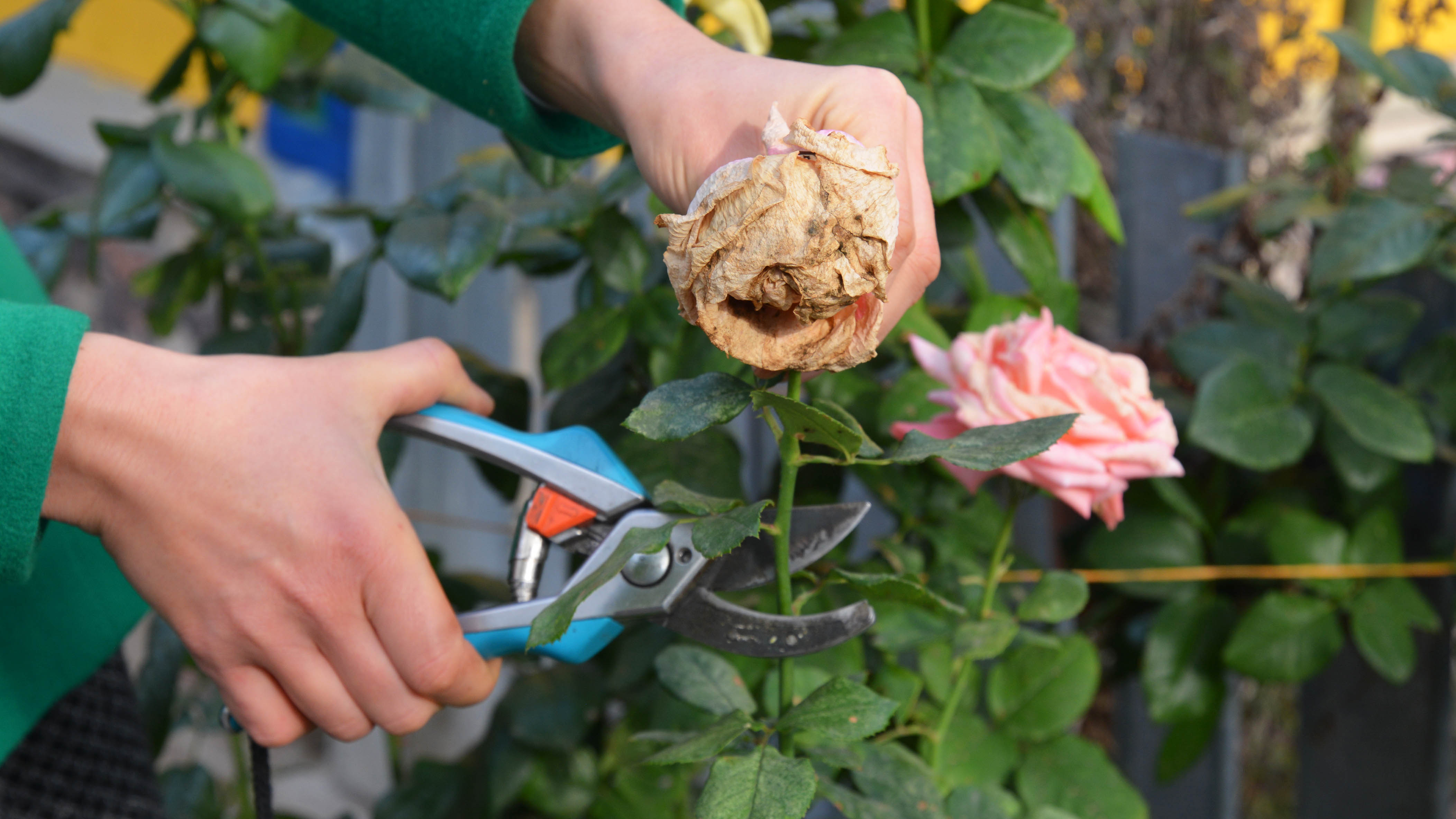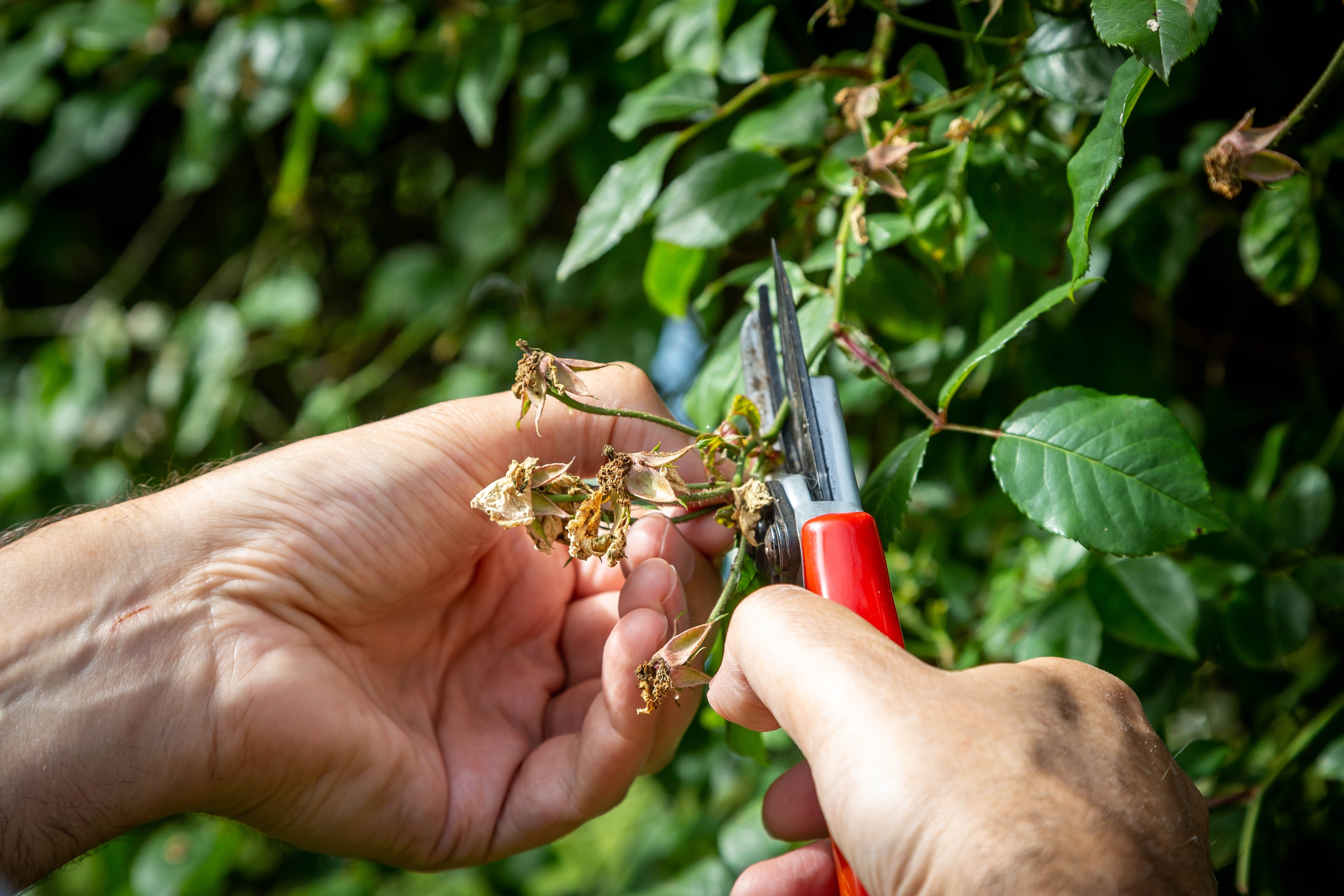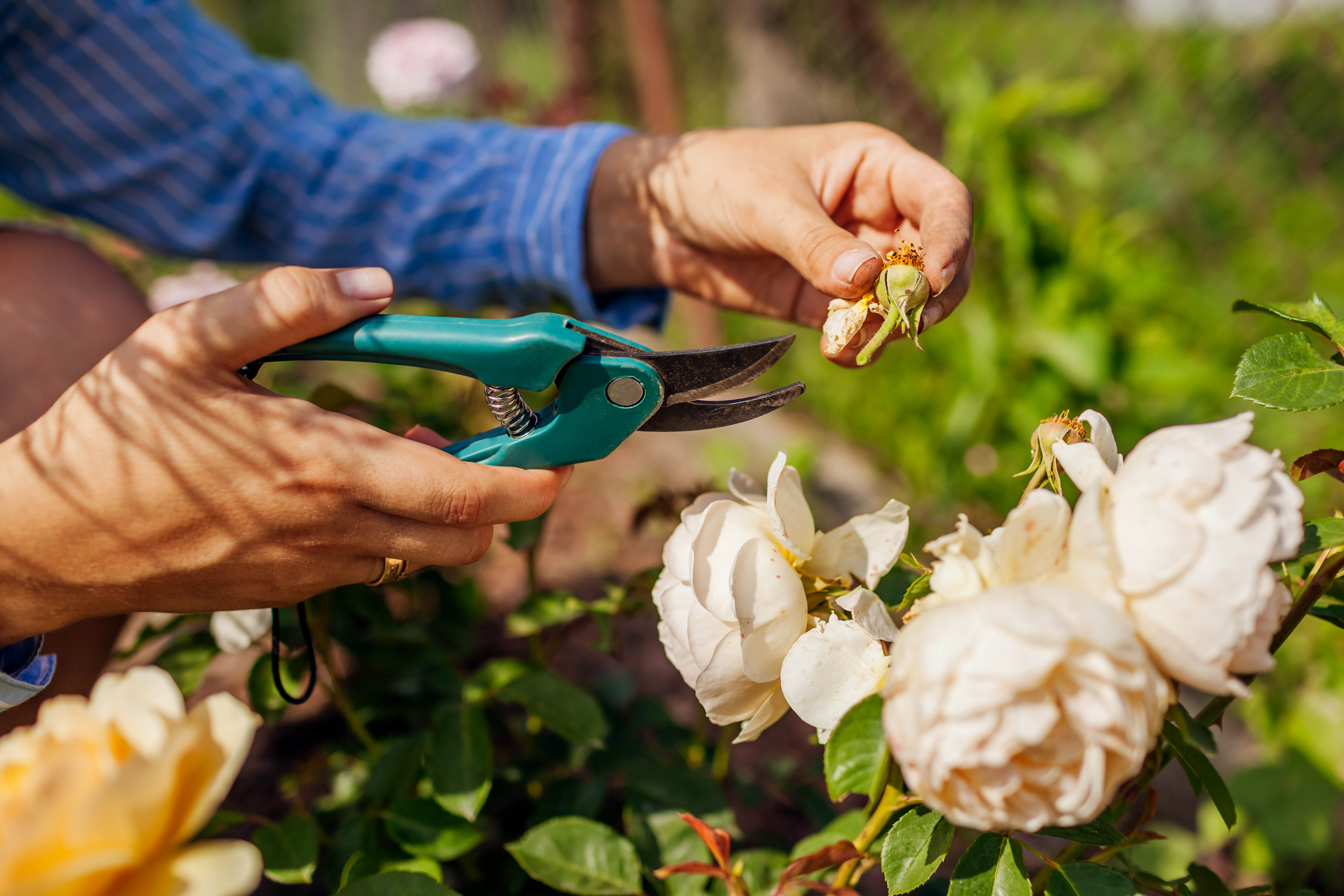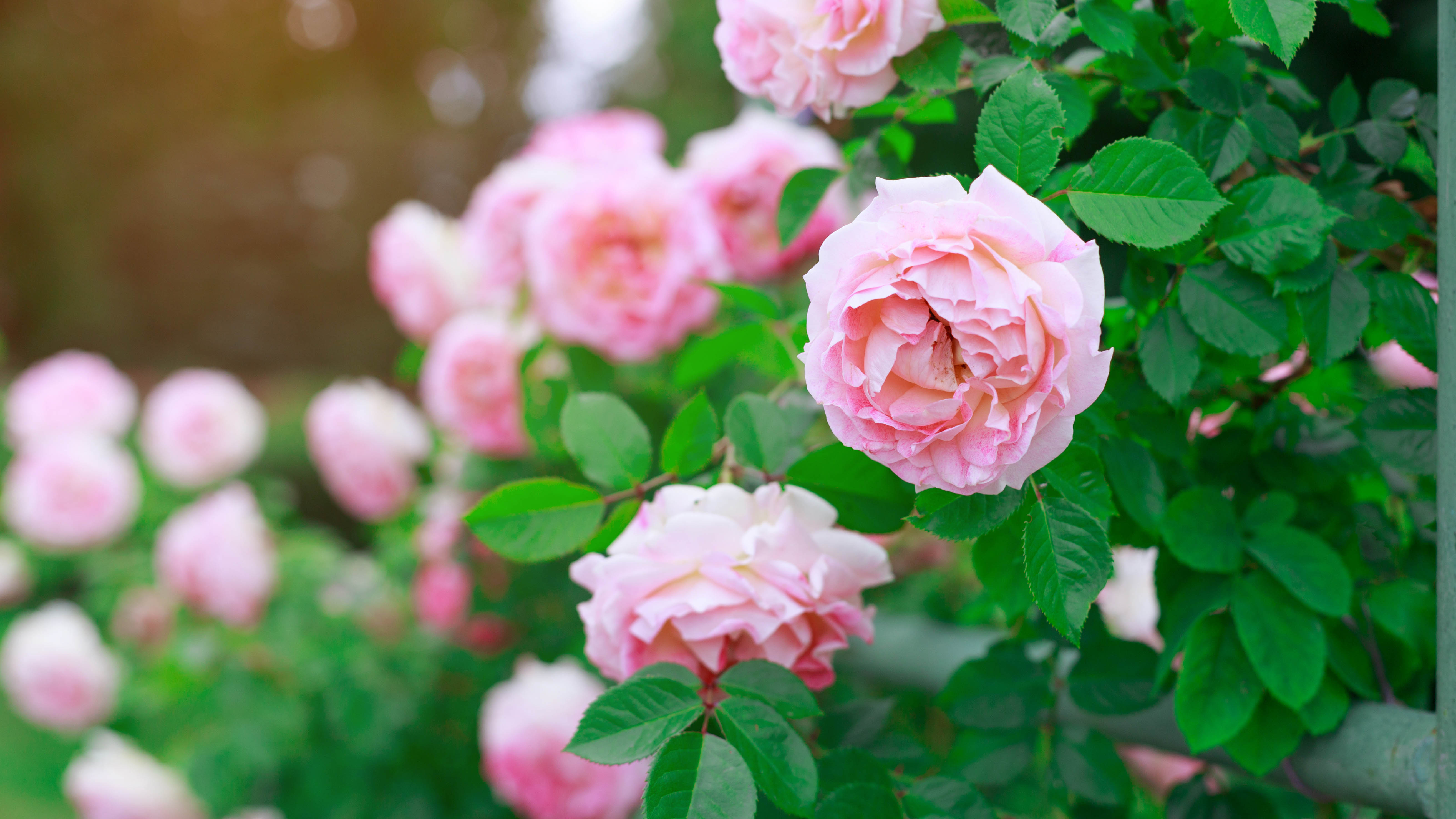How to deadhead roses to keep them blooming
Here’s how to deadhead roses the right way to get brilliant blooms

If your roses are starting to wilt or show brown petals, you’ll need to know how to deadhead roses. Deadheading is essentially when you snip off spent (wilted) or faded flowers to encourage new blooms and healthy growth. This simple process tricks a rose bush into spending more energy on budding and flowering new roses, rather than wasting it on dying roses or developing seeds.
If you don’t know how to deadhead roses properly, this can encourage fungal infections that may lead to the stem dying. However, deadheading roses will keep your flowers tidy and more attractive in your backyard, so it's well worth doing.
You may also be interested in when is it too late to prune roses — advice from a garden expert and what causes spots on roses and how to get rid of them. Plus, how to care for roses in fall and winter.
Bypass pruning shears
Gardening gloves
Container to dispose of the cuttings
Similar to knowing how to deadhead hydrangeas, deadheading roses will take no time at all, and with these three easy steps, it couldn't be more simple. So, if you want beautiful florals all season, here’s how to deadhead roses to keep them blooming.
As you’re tending to your blooms, why not learn how to prune hydrangeas and how to prune lilacs while you’re at it. And before you start, check out these 5 easy tips for cleaning pruning shears.
How to deadhead roses
First, identify the spent or wilted roses before you begin to deadhead. These include faded flowers or those with petals falling off.
1. Identify the five-leaf junction

Once you’ve spotted your spent flower, look for the first set of five healthy leaves on the stem. This is known as the five-leaf junction and this is where new growth will sprout. In addition, the plentiful leaves mean that the rose bush is already directing energy to this area. The right way to deadhead a rose is to cut just above a leaf set that has five or more leaves.
Sign up to get the BEST of Tom's Guide direct to your inbox.
Get instant access to breaking news, the hottest reviews, great deals and helpful tips.
2. Cut off spent roses

Next, snip 15cm above the strong healthy leaf set using one of the best pruning shears. Be sure to use a pair of bypass shears rather than anvil, as these are designed for cutting live stems.
When deadheading, it’s recommended to cut at a 45-degree angle and to slope it towards the ground. This helps any water from rain or sprinklers run off of the shoot, so no bacteria or fungi grows on it. Ideally, your next flower shoot will grow from the leaf joint.
3. Prune the rose bush

While you’re tending to the flowers, you can prune the rose bush further where necessary. Remove or cut back any dead stems and leaves — this will help to encourage new growth and make the rose bush look more tidy. Get rid of any diseased branches you spot by cutting back to a healthy branch.
Bear in mind there are different methods for the various types of rose, so read our guide on how to prune roses for best results. Discard the dead roses and stalks into the container for your compost heap or garden waste.
When to deadhead roses

It’s always best to deadhead roses as soon as you see them beginning to fade or wilt. Single flowers or clusters of roses could require deadheading at a time. Once you're finished, new flowers will appear, as the energy will now be channelled into making beautiful blooms.
You will want to stop deadheading from September and leave the spent flowers in place throughout the winter months. Then you can begin pruning again in the early spring.
For more outdoor tips, tricks, and how-tos, check out our guides on how to prune hydrangeas, how to prune lilacs and how to prune grapevines to encourage new growth.

As the Homes Content Editor, Cynthia Lawrence covers all things homes, interior decorating, and garden-related. She has a wealth of editorial experience testing the latest, ‘must-have’ home appliances, writing buying guides and the handy ‘how to’ features.
Her work has been published in various titles including, T3, Top Ten Reviews, Ideal Home, Real Homes, Livingetc. and House Beautiful, amongst many.
With a rather unhealthy obsession for all things homes and interiors, she also has an interior design blog for style inspiration and savvy storage solutions (get rid of that clutter!). When she’s not testing cool products, she’ll be searching online for more decor ideas to spruce up her family home or looking for a great bargain!
